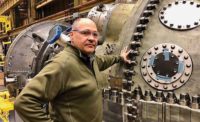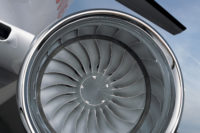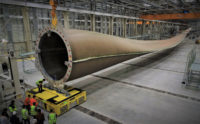GREENVILLE, SC—Source: How One GE Aerospace Plant Used Lean to Produce a New CFM56 High-Pressure Turbine Blade by Christine Gibson
By mid-2020, normal routines around the world had ground to a halt. Early-stage quarantine plans to make the best of the spare time — to get in shape or learn a new skill — were giving way to languor and endless doomscrolling.
But at GE Aerospace's plant in Greenville, South Carolina, engineers were seizing a rare opportunity. When the pandemic brought aviation to a standstill, they used the downtime to overhaul both the facility's physical layout and their daily routines. "The pandemic gave us the chance to reimagine the whole shop," says Chris Ubillus, Greenville's executive plant leader. "It challenged us to think about how to make the factory more efficient and responsive."
Three years later, the aviation market is almost completely recovered, and orders for aerospace components are outstripping pre-pandemic levels. To help meet customers' needs, CFM International, a 50-50 joint venture between GE Aerospace and Safran Aircraft Engines, is introducing a new high-pressure turbine (HPT) blade that is designed to extend the time on wing for the world's most popular jet engine, the CFM56. One of the most complex parts in the engine, the CFM56 HPT blade, is in high demand — and, after its sitewide transformation, Greenville is tasked with its production.
"This blade is one of the most technically challenging parts of the engine to manufacture," says Tom Levin, VP of CFM commercial programs for GE Aerospace. "We need a shop that we can rely on to crank out the highest volumes at the highest quality. The Greenville team is a model plant for us."
"We're ready," Ubillus says. "The vision behind this change was that we knew we would need to grow." At the beginning of 2020, the Greenville facility had been in the middle of a ramp-up as CFM prepared to boost production of its LEAP engine to the highest rate ever for a turbofan. Meanwhile, orders for the CFM56, already the best-selling jet engine in history, kept rolling in. Greenville manufactures HPT blades for both CFM engines, but the shop was contending with space and budget headwinds.
When COVID began impacting the world, Ubillus and his team took advantage of the lull to streamline their processes using lean, the management philosophy at the heart of GE's turnaround. "Lean's core purpose is to eliminate waste, with respect for people as the foundation," Ubillus says. For a manufacturing plant like Greenville, that means getting the most out of their equipment, inventory, space, and time.
In a counterintuitive — but ultimately fruitful — move, they started with the oldest, highest-volume operation in the shop: the CFM lines, which produce more than 2,000 blades a week. "It wasn't like we could just take the fat off," says Mark Schafer, the operations leader at the Greenville plant. "All the fat had already been trimmed off. We were going after true process improvements." By consolidating equipment, refining the procedure for each task, developing strategies to clear bottlenecks, and assigning separate groups to oversee different stages of assembly along the CFM line, the Greenville team boosted throughput by 25% and use of resources by 34%. Their success served as a model for the rest of the plant.
"If we hadn't done the work then, we wouldn't have gotten to where we are now for another two or three years," Ubillus says. "We accelerated all our growth in that short span of time."
As a result, launching a new product is now just "business as usual," says Kevin Ridley, Greenville's lean leader. "We've worked out our time management processes, our tools, and our communication methods throughout the line. All the prep work is already done." So when CFM designed a more durable turbine blade for the CFM56 engine, Greenville hit the ground running. Mounted in the core of the engine, high-pressure turbine blades spin at thousands of RPM in temperatures hot enough to melt wrought iron, turning the shaft that powers the fan at the front.
The new blade will help prolong the life of an engine that is already the most durable in history: Of the 24,000 CFM56 engines in service today, nearly half have yet to need a shop visit. The improved design is also evidence of CFM's ongoing investment in the CFM56, even after 41 years and 1.2 billion flight hours. Domestic air travel rebounded quickly after COVID, and amid a shortage of newer engines, CFM remains the workhorse of the short- to medium-haul narrow-body fleet.
"In this supply chain environment, having a vendor that you can count on to deliver the parts when you need them to service the engines — that's where Greenville is a massive competitive advantage for us," Levin says. "No third-party blade manufacturer makes anywhere near their volume."
As Greenville continues its ramp-up, lean is becoming "a way of life," Ridley says. According to Schafer, that's how it ought to be. "Lean isn't something you should focus on," he says. "It should be in your DNA, and you just do it. I don't focus on every breath I take. This is the same. It's something that keeps us alive."






